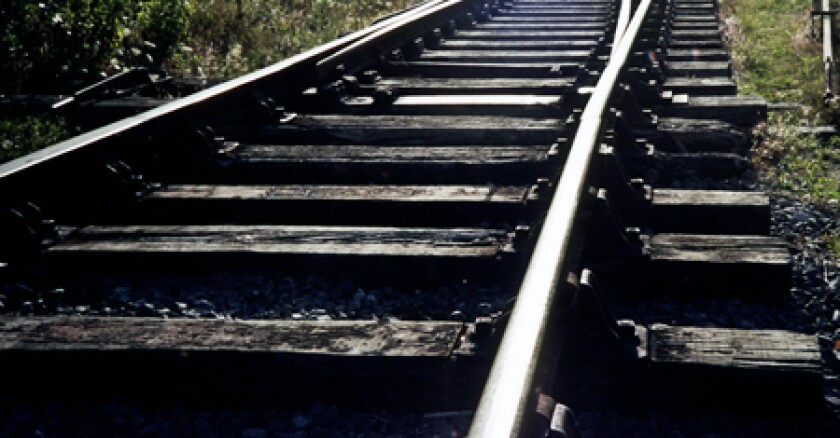It isn’t just the intercity rail system, which is something of a joke everywhere but the Northeast Corridor -- and even there it’s a poor performer by international standards. But it’s also the aging “heavy” rail mass transit systems in cities like Atlanta, Chicago and Washington, D.C., which are facing huge bills for deferred maintenance, forcing service cutbacks and fare increases -- even as ridership has risen to levels not seen in more than 50 years. Light commuter rail has caught on in numerous cities, but there are problems in securing rights of way and controlling costs. Oddly, the bright spot is freight. The nation’s railways don’t handle passengers well, but they do a bang-up job hauling stuff -- much better than most other countries. Most passenger trains must travel on lines owned by thriving railroads, contributing to the congestion many commuter rail systems are experiencing.
The Obama administration is more sympathetic to rail transit than its predecessors. It proposed a historic expansion of the rail passenger system, including building a national high-speed network of bullet trains with an initial $8 billion down payment in stimulus money (with more promised) to a few states for some modest projects to get things going.
The problem is that the newly elected Republican governors of states where much of the money was supposed to go -- like Ohio and Wisconsin, and maybe Florida -- don’t want it, at least not for high-speed rail. They’ll gladly take it for auto infrastructure like roads, bridges and highways. But U.S. Transportation Secretary Ray LaHood, a former Republican congressman from Peoria, Ill., won’t agree to that: It’s accept rail or hit the trail, and the money will go to states that want it.
Recently the greater New York area was stunned by New Jersey Gov. Chris Christie’s decision to pull his state out of a long-planned project -- described as the largest public transit program in the country -- to build a second rail tunnel beneath the Hudson River to ease the commute by 45 minutes for Jersey residents who work in New York City. With substantial overruns, it was estimated to cost as much as $13 billion. Christie’s state was on the hook for $2.7 billion, plus the added costs for its share of the project, which already is under construction. Much is at stake, including 6,000 construction jobs.
Making significant improvements in rail service in this country seems like a no-brainer. Ridership is increasing. The highways and airways are overburdened. It’s far more energy efficient and cleaner, and compared to cars, it’s safer. If done right, it can be one of the most effective economic development tools available. But it’s also very expensive and requires a sustained commitment over many decades. And right now, governments are deep in debt.
Critics of Obama’s high-speed rail plan make several points. The project will cost far too much in initial outlays and subsidies to justify the benefits, siphoning off the funding of worthier programs, including commuter mass transit. The United States has become a suburbanized society, sprawling over a large land mass, with only a few places having sufficient population density to warrant intercity rail service. To be successful in any area except the Northeast Corridor, high-speed trains would have to make too many stops, and therefore would be too slow to compete.
Given the political changes in the new Congress and in many states, it’s hard to imagine that we’ll see many bullet trains whizzing through our future. But that doesn’t necessarily mean that all is lost for rail advocates. The incoming chairman of the U.S. House Transportation and Infrastructure Committee, Florida Republican John Mica, is outspoken in his opposition to the administration’s plan, which he claims is likely to lead to many “slow-speed trains to nowhere.” But he does support what he calls “a better directed high-speed rail program.”
What’s that likely to mean? The first demonstration grant of $1.25 billion linking Tampa to Orlando may go through, despite the concerns of high-speed rail advocates. They believe that it could set back their cause because there are five stops along its 84-mile route, so it will only cut 30 minutes off the trip by car.
Mica and others argue that the best way to spend limited resources now would be to first invest in improving dense corridors -- like in the Northeast, where Amtrak’s Acela service already exceeds the airlines in passenger volume between Washington, D.C., and New York City, even though track conditions prevent the trains from maintaining high speeds. The Los Angeles-to-San Francisco corridor also might qualify.
Beyond that, most advocates and critics can agree on the need to make strategic improvements where there now are serious bottlenecks in the system that delay both freight and commuter trains, like around Chicago or New York.
Meanwhile, the political jockeying over passenger rail money continues. California and other states will receive more federal funds because Ohio and Wisconsin are turning them down, prompting the Los Angeles Times to chortle, “This is sort of like turning down a free car because you don’t want to have to pay for gasoline and insurance.”











